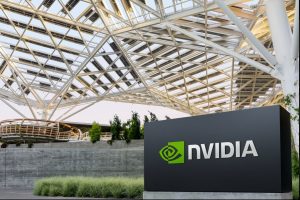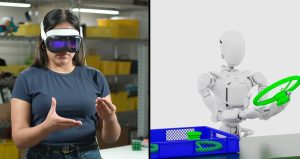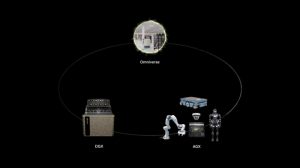SANTA CLARA — At CES 2025, NVIDIA CEO Jensen Huang delivered a powerful keynote, unveiling groundbreaking innovations poised to accelerate advancements across gaming, autonomous vehicles, robotics, and agentic AI. Huang emphasized the rapid pace at which AI is advancing, stating, “AI started with perception—understanding images, words, and sounds—then moved to generative AI, creating text, images, and sound. Now, we’re entering the era of ‘physical AI,’ where AI can reason, plan, and act.”
One of the key announcements from Huang was the introduction of the NVIDIA Cosmos platform, which is designed to push the boundaries of physical AI. This new platform combines models and video data processing pipelines to advance robotics, autonomous vehicles (AVs), and vision AI, making it a pivotal tool for industries relying on AI technology.
In addition to the Cosmos platform, Huang introduced NVIDIA’s Blackwell-based GeForce RTX 50 Series GPUs, which promise to deliver remarkable visual realism and a significant leap in performance. The new GPUs, including the GeForce RTX 5090, are packed with 92 billion transistors and offer up to 3,352 trillion AI operations per second, enabling developers and gamers to experience unparalleled graphics and AI-powered advancements.
NVIDIA also launched a suite of AI tools for PCs, including AI foundation models for RTX computers. These tools integrate NVIDIA’s NIM microservices and AI Blueprints, enabling the creation of digital humans, podcasts, and multimedia content. The addition of these tools will empower creators and developers, providing them with the resources to design and deploy AI agents for a wide range of applications.
One of the most exciting developments was the reveal of NVIDIA Project DIGITS, a compact AI supercomputer powered by the NVIDIA Grace Blackwell Superchip. Project DIGITS is designed to bring the full NVIDIA AI stack to developers’ desktops, providing them with the tools to prototype, develop, and deploy AI solutions across industries. “This is NVIDIA’s smallest and most powerful AI supercomputer,” Huang stated, highlighting its potential to transform the way AI is integrated into everyday workflows.
Another major announcement focused on autonomous vehicles, with Huang unveiling the NVIDIA DRIVE Hyperion AV platform, which incorporates the NVIDIA AGX Thor system-on-a-chip (SoC). This platform provides the power needed for autonomous driving systems, delivering advanced AI capabilities and functional safety features. Huang also highlighted the importance of synthetic data in training autonomous vehicles, explaining how NVIDIA’s Omniverse and Cosmos are essential tools in generating the vast amounts of data needed to safely operate AVs.
As part of its continued efforts to drive innovation, NVIDIA introduced AI Blueprints for agentic AI, which include tools for automating workflows in areas like customer support and fraud detection. The company also showcased advancements in robotics, including the Isaac GR00T Blueprint for synthetic motion generation, which enables the creation of large-scale simulations for humanoid robot training.
Closing his keynote, Huang emphasized the incredible breakthroughs achieved over the past year, citing advancements in AI, robotics, and autonomous vehicles. “It’s been an incredible year,” Huang said, reflecting on the significant progress made by NVIDIA and its partners in pushing the boundaries of what’s possible with AI.



















